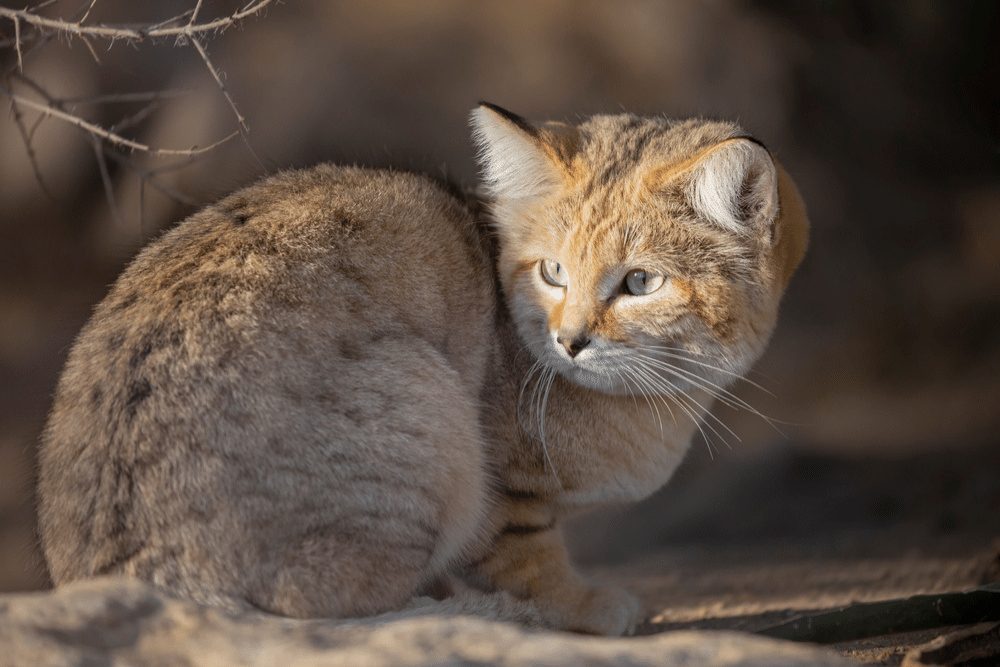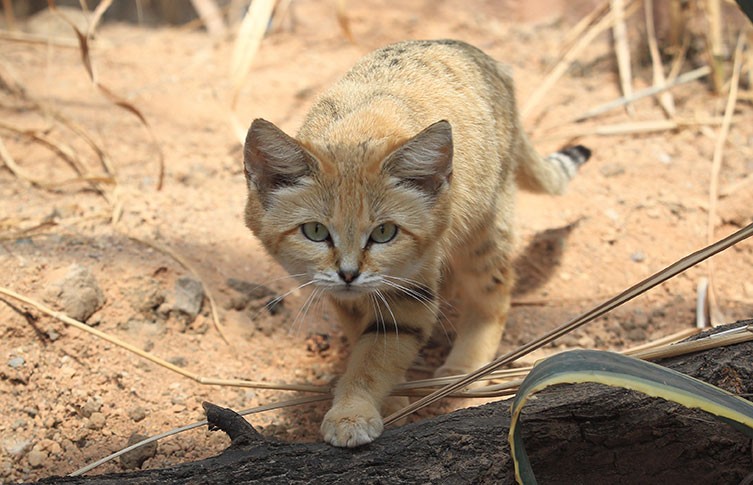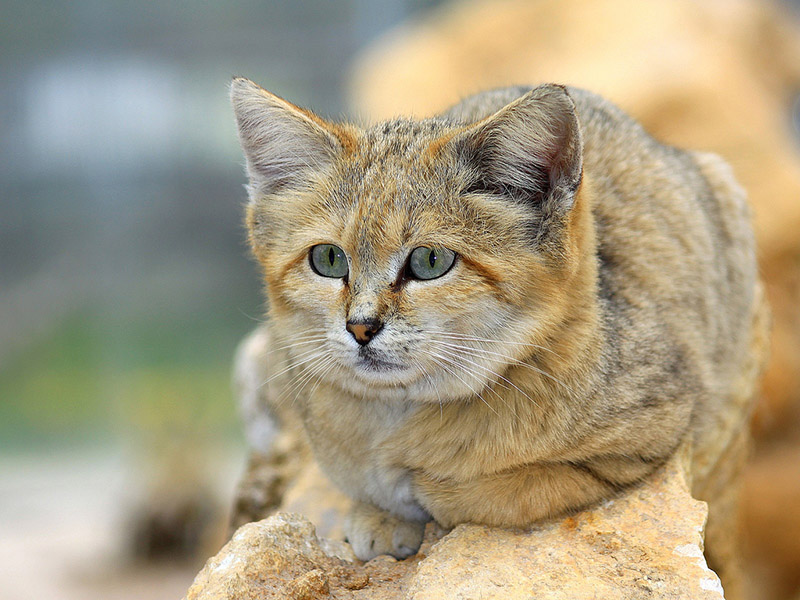With the enchanting look of a house cat, the sand cat can easily pass for a pet.
He is about the same size and weight as a typical kitty. His eyes exude innocence and friendliness that makes you want to pick it up and take it home.
Well, that would be one of the worst mistakes of your life. Sand cats are as wild as they come. They may look sweet and harmless but they don’t belong to the pet category.
This small and solitary animal lives in Asian and African deserts. With furred paws, he can trot the desert landscape without sinking into it.
His body is so well-adapted to life in the desert that he can go for weeks or months without needing to drink water.
When the temperatures skyrocket beyond his comfort level, he burrows into the ground for some comfort.
The sandy brown cat is pretty fascinating. But is it dangerous to humans?
The Danger of Sand Cats

The sand cats fit the profiles of ferocious hunters. Sure, they are small and adorable but are very aggressive.
In the wild, sand dune cats hunt all kinds of animals including birds, rodents, and venomous snakes. They are especially experts at killing sand vipers.
These felines are courageous, athletic, and downright wild.
In the wild, they don’t pose a threat to humans. However, if you bring the home, do not expect things to go well.
For one, they are extremely solitary and prefer hanging out alone unless when mating with other cats.
That means they don’t welcome any kind of interaction such as being picked up, petted, or given head massages.
If you come too near, this cat can bite and scratch you. As a skillful hunter, best believe, these scratches will deliver deep and painful wounds on your skin.
Taming a sand cat is possible if you adopted one at a very young age. You could try socializing him with people and other pets but at some point, her wild nature will take over.
Granted, he will be less aggressive compared to her wild counterparts but taming one 100% is a hard nut to crack.
He will likely have very high predatory instincts and may hurt other smaller pets around the home.
In summary, sand cats are dangerous as pets. If you care for them, consider helping to preserve them out there in the wild.
Learn more here: Can Sand Cats Be Pets?
Can Sand Cats Be Petted or Touched?
Unlikely. As mentioned before, this wild kitty prefers his own company to that of others (even those of his own kind).
As a result, he is not friendly or affectionate towards anyone. Petting is thus out of the question and may come off as invading his space.
When a sand cat feels threatened, he will fight back with deadly bites and scratches.
Anything that can take on an enormous venomous snake without any hint of fear can attack when he feels like it.
Don’t imagine that this kitty bites and claws like your domestic cat would. He is about 10 times worse if he really decides to go crazy.
This mean kitty simply lacks the characteristics of your housecat. Petting him can injure you terribly.
For your own safety, keep your hands off of the cat.
How Fast Can Sand Cats Run?

According to Wikipedia, a sand dune cat can take off at a maximum speed of 19-25 miles per hour (30-40km/hr.).
Like a cheetah, he has sudden speed bursts but often runs at a fast pace with occasional leaps.
He can travel long distances in search of prey or mates. In Israel, four sand cats were tracked for a distance of 3.1-6.2 miles (5-10 km) in a single night. That’s a pretty long ground to cover for such a tiny creature.
The average housecat can run as fast as 30 miles per hour (48.3 km/hr.). Some can go as high as 46 miles per hour (74 km/hr.).
So, the sand cat is a tad slower than the housecat but he’s still much faster than a human being.
You cannot outrun this one no matter how fast you are. Lucky for you, this feline isn’t big on running after humans because we are simply not their type of prey.
Do Sand Cats Drink Blood?
PopSci claims that sand cats indeed drink the blood of their enemies. This doesn’t really come as a shock since all predators pretty much do this.
For instance, when a lioness brings down an antelope, she will feast on every part of the body including drinking her blood.
With that said, the sand cat may not walk up to you and start drawing out some blood from your vein just so he can have a taste.
For one, you are not really his preferred prey. He will only attack if you threaten him in one way or another.
If some of your blood spills, he may lick it off but that’s about it.
Closing Thoughts
Because of his seemingly gorgeous and petite appearance, the sand cat can be mistaken for a gentle domestic cat.
However, he is wild and does not appreciate any kind of affection towards him.
If you want a feral cat to own, consider third-generation wild cats that are less aggressive and better-behaved. This one is best left in the wild.

Hi! I am Eleanor Price. I started this website after my cat, Louie, almost died from a case of botulism (a type of food poisoning often caused by bacteria that grow on food items). Turned out that my cat’s diet was the problem. I have made it my duty to provide the best information and recommendations about everything cat lovers need to know about their felines’ health and wellbeing. My goal is to find the most informative content on anything feline-related and share it with fellow hardworking kitty lovers.

